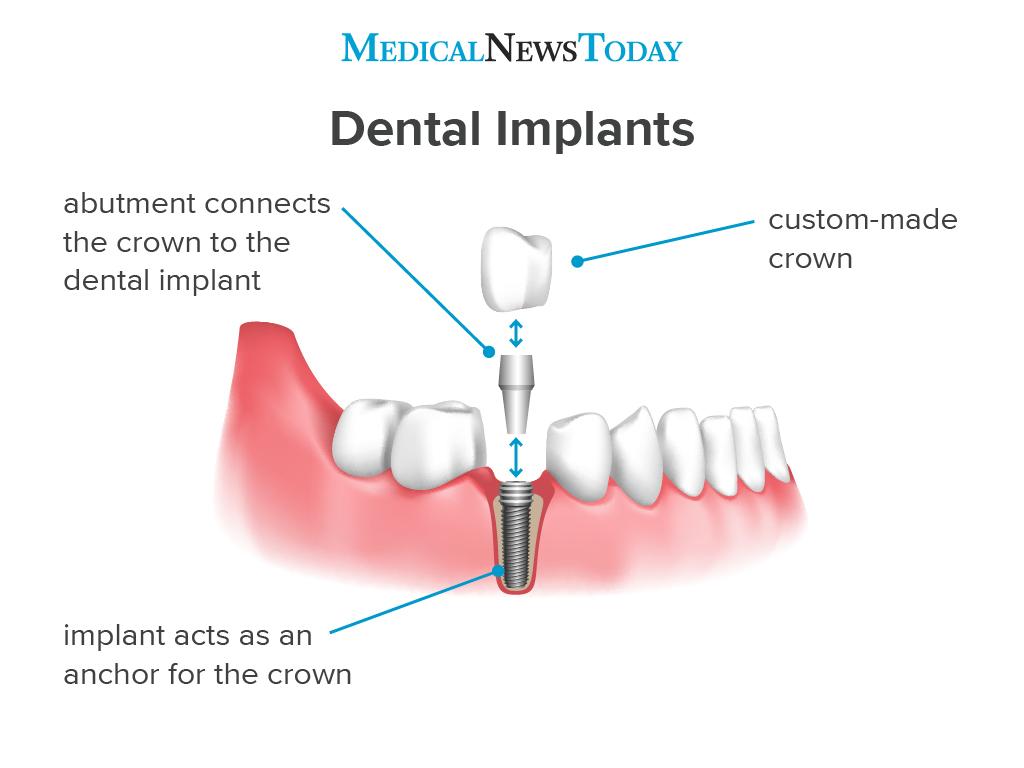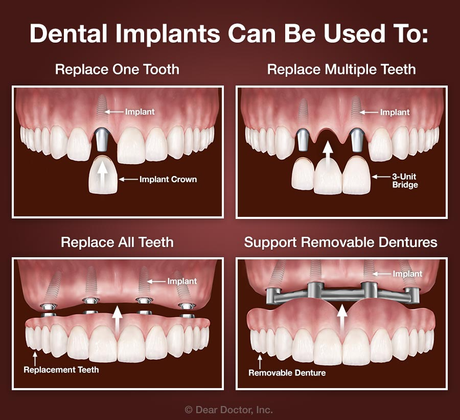Getting The Dental Sense To Work
Table of ContentsGetting My Dental Sense To WorkExcitement About Dental SenseThe smart Trick of Dental Sense That Nobody is DiscussingFascination About Dental Sense
are medical devices operatively dental implanted right into the jaw to bring back a person's ability to eat or their look. They provide support for fabricated (fake) teeth, such as crowns, bridges, or dentures. When a tooth is lost because of injury or illness, an individual can experience issues such as quick bone loss, malfunctioning speech, or adjustments to chewing patterns that result in pain.Oral implant systems contain an oral implant body and dental implant joint and may likewise consist of a joint fixation screw. Dental implant vs bridge. The dental implant body is surgically put in the jawbone instead of the tooth's root. The dental implant abutment is typically affixed to the implant body by the abutment addiction screw and prolongs with gum tissues into the mouth to sustain the attached synthetic teeth
(https://dentalsense1.bandcamp.com/album/dental-sense)Framework of The Oral Implant System selecting oral implants, talk with your oral company about the potential benefits and threats, and whether you are a candidate for the treatment. Points to think about: Your general health is an important consider establishing whether you are an excellent candidate for oral implants, how much time it will certainly take to heal, and the length of time the dental implant may remain in area.
Smoking may impact the recovery procedure and reduce the lasting success of the dental implant. The healing procedure for the dental implant body might take a number of months or longer, throughout which time you commonly have a short-lived joint instead of the tooth. the dental implant treatment: Meticulously adhere to the oral health instructions given to you by your oral provider.
The Basic Principles Of Dental Sense
Implant failure can result in the need for an additional procedure to deal with or change the implant system. Recovers the capacity to eat Restores cosmetic appearance Assists maintain the jawbone from shrinking as a result of bone loss Maintains the health and wellness of the surrounding bone and periodontals Aids maintain adjacent (neighboring) teeth secure Boosts quality of life Damages to bordering all-natural teeth during implant placement Injury to the surrounding tissues throughout surgical procedure, such as sinus opening Injury throughout surgical procedure (as an example, crack of bordering jawbone) Insufficient function, such as feeling like the teeth do not attack together usually An experience that the tooth hangs or turning in place arising from an abutment screw loosening up Implant body failure (looseness of the implant body) because of systemic infection, which might be extra most likely in individuals with unrestrained diabetes because of local infection in bone and gums supporting the implant body because of postponed recovery, which may be more probable in people who smoke Trouble cleansing the periodontals around the implant, leading to inadequate oral health Without treatment periodontal disease Post-surgical tingling due to nerve impingement or damage Constantly alert health and wellness care suppliers and imaging professionals that you have oral implants before any type of magnetic vibration imaging (MRI) or x-ray treatments.
FDA is not knowledgeable about any adverse events reported for MRI or x-ray treatments with dental implants. Oral implants systems are commonly made of materials that comply with international agreement standards of the International Company for Standardization (ISO) or ASTM International. These criteria have information of what makes a safe material.

An oral implant is a framework that replaces a missing tooth. With screw-like devices, the specialist inserts an implant right into the jawbone, and it works as an anchor for an artificial tooth, called a crown. A device called an abutment connects the artificial tooth to the dental implant. The crown is customized to go to website fit the person's mouth and match the shade of their teeth.
The Best Guide To Dental Sense
Some individuals are not qualified for oral implant surgery. It is for oral cosmetic surgeons to operate individuals with: intense illnessuncontrollable metabolic diseasebone or soft tissue illness or infectionIf these problems are fixed, a person can have the surgical procedure. In, dental surgeons avoid operating people with: If individuals with any of the above undertake dental implant surgical procedure, there is a higher danger of the dental implant falling short.

Oral dental implant surgical procedure is a tailored process. Offer you time to heal. Connect the article and final crown, bridge or denture.
Next off, your surgeon will very carefully place the oral implant right into your jaw. If your implant is near the front of your mouth, your dental expert will certainly make a short-term tooth for you to use up until you recover.
The Buzz on Dental Sense
Your service provider can tell you what to anticipate in your circumstance. Throughout the healing stage, your jawbone needs to fuse to the dental implant. This process, called osseointegration, is vital for stability and long-lasting success. This process can take anywhere from three to 9 months. In some cases, it might take longer.
As soon as your dental implant heals, your dentist can connect the abutment (small connector post) and your last repair (crown, bridge or denture). This usually takes about one hour to finish and may need a 2nd minor surgical procedure. You should not feel any kind of pain during your dental implant treatment since your service provider will make use of drug to numb your periodontals.